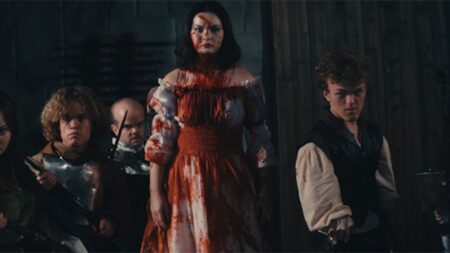Seeking to combat the longstanding flow of animation jobs to Canada and other locations, the Animation Guild issued a report on Thursday urging California to improve its tax incentive program.
California’s $330 million tax incentive is limited, for now, to live-action films and TV shows. Two bills, SB 630 and AB 1138, would expand the program to $750 million and would include animation for the first time.
The guild report, prepared by CVL Economics, argues that would not be enough.
“The state is now decades behind the aggressive policy strategies implemented by global competitors, and the erosion of in-state production has had a profound impact on its once-thriving animation talent pipeline,” the report states.
As an example, the guild points to “Moana 2.” The original film was produced in Burbank, but much of the sequel was made at Disney’s facility in Vancouver. The union argues that decision cost California 338 jobs, plus another 479 jobs when indirect effects are taken into account.
Outsourcing has long been a source of contention between the studios and the guild, and led to two strikes in 1979 and 1982. In negotiations last year, the guild proposed eliminating the outsourcing clause in the contract, but the Alliance of Motion Picture and Television Producers rejected the idea.
Jeanette Moreno King, the president of the Animation Guild, said that while animation work has been sent overseas for a long time, studios have begun to ship many other tasks abroad as well, including storyboarding and directing.
“Now they are sending out entire productions,” she said. “They’ve expanded what they send out. Some shows are completely not made here.”
King has been involved in lobbying on the bills to expand the tax incentive program. She said that while the current bills include animation, many children’s TV shows wouldn’t be eligible because they don’t meet the thresholds for budget and episode length.
“It’s a win just to get it in there at all,” she said, adding that it’s probably too late in the legislative process to do anything about the thresholds.
The CVL report also notes that visual effects work has been poached by Canada for decades, with post-production hubs established in Montreal and Vancouver, while other hubs have also taken root in London and Seoul. The guild argues those jobs deserve consideration because they are at the cutting edge of technology.
“If California wants to maintain its leadership in entertainment, the state cannot only simply protect
legacy production models — it must invest in the future of the industry,” the report argues. “Rebuilding a robust cluster of animation talent is not about nostalgia; it’s about talent competitiveness.”
The current California tax incentive program includes a 5% bonus for live-action productions that spend at least 75% of their VFX budget in California. The report argues that is not competitive with VFX incentives in British Columbia and other places. Some productions use the California tax incentive for principal photography and then complete their VFX work elsewhere.
The report argues that VFX work should be excluded from the state’s $100 million per-project cap, which would provide a much greater inducement to keep those jobs in state.
The report also argues for a carve-out for animation work within the $750 million annual allocation. As it stands, animated TV shows and films will have to compete against live-action shows on a “jobs ratio” score in order to win credit allocations.
Lawmakers have been hashing out the details of the legislation in negotiations with the Motion Picture Association and a coalition of entertainment unions. In their current form, the bills would increase the base amount of the state tax credit from 20% to 35%, with a potential 5% bonus for filming in economically depressed areas or in areas outside of Los Angeles.
The Alliance of Independent Commercial Producers has also advocated — so far without success — to include commercial production in the state subsidy.
Read the full article here








